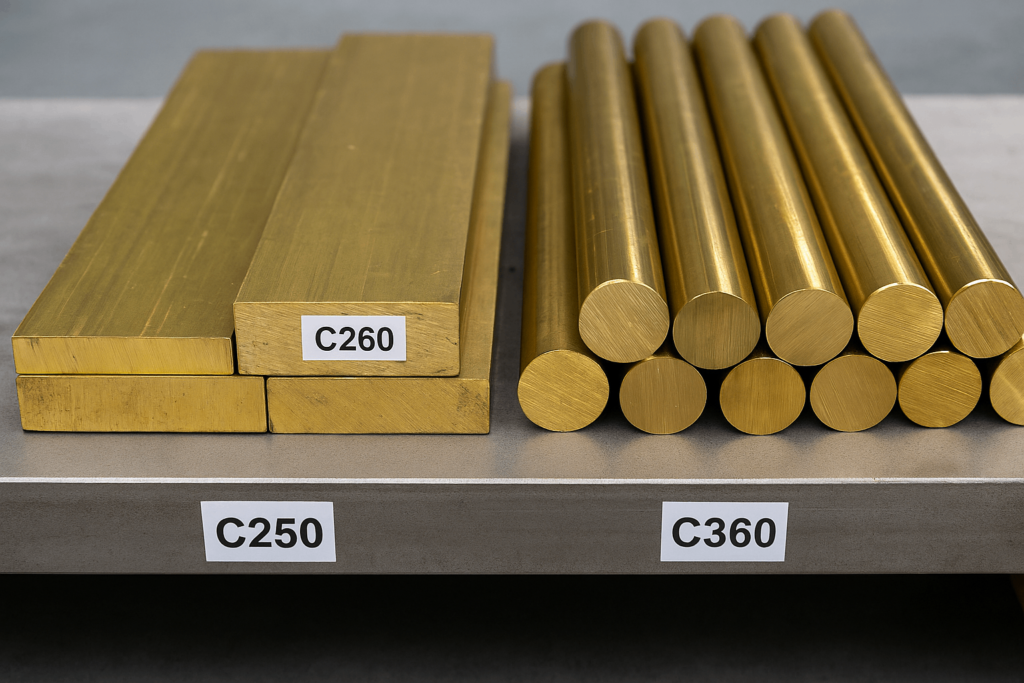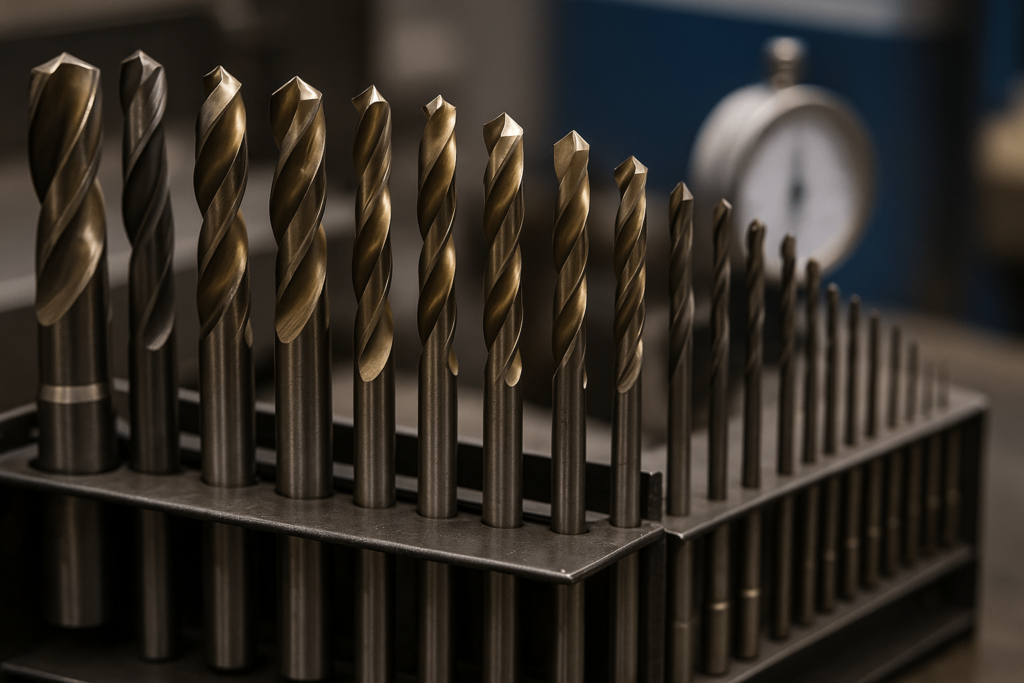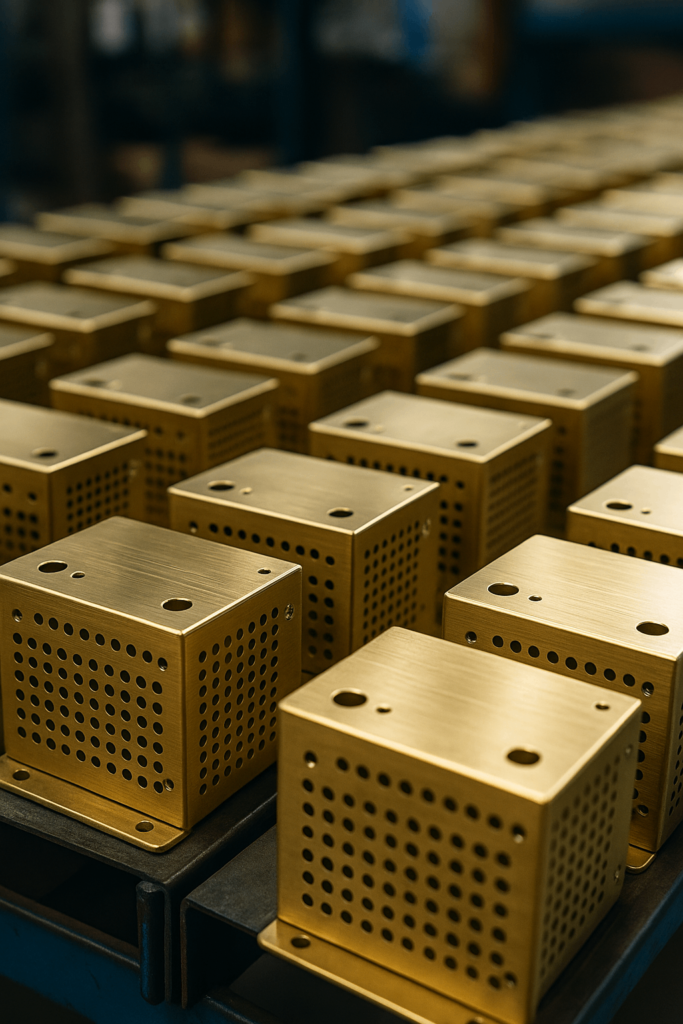For international buyers and bulk purchasers, brass drilling quality reflects far more than tooling skill—it signals supplier capability, process maturity, and your downstream assembly efficiency. In sheet metal fabrication, where turnaround speed and dimensional precision define project viability, brass drilling can make or break batch consistency.
At YISHANG, we understand buyers aren’t seeking tutorials—they’re scanning for technical confidence. This guide outlines actionable insights that support better supplier selection, manufacturing integration, and risk mitigation for your next custom brass drilling for sheet metal enclosures or other volume production requirements.
Understanding Brass Behavior in Drilling Environments
Brass Grades That Impact Your Orders
Sourcing projects frequently specify C360 for its machinability or C260 for aesthetics and corrosion resistance. Yet this material choice directly influences:
Tool wear and replacement cycles
Hole finish quality and burr control
Feed rate flexibility on CNC drilling machines
A high-volume order using C260 may require different bit geometries and spindle speeds. Procurement teams should confirm that suppliers adjust processes by brass type and part complexity.

How Brass Reacts to Drilling Loads
Brass generates less resistance than stainless steel, yet it grabs drill bits more aggressively due to its softness. This grabbing behavior can lead to dimensional drift and burr formation if drill geometry or speed isn’t adapted.
To address this, high-volume drilling operations require zero-rake angles and controlled feed rates—unlike drilling through stainless steel, which benefits from rigidity. Maintaining precision demands tight tool control, especially on CNC drilling machines.
Geometry and Feed Strategies That Ensure Consistency
Drill Geometry for Repeatable Precision
Professional bulk suppliers like YISHANG rely on tooling designed for non-ferrous metals. The following geometry has proven essential in reducing failure rates across thousands of units:
| Geometry Feature | Recommended Value | Outcome in Volume Production |
|---|---|---|
| Point Angle | 135°–140° | Reduced burr, straighter holes |
| Rake Angle | 0° (Flat) | Prevents bit grabbing |
| Helix Angle | 15°–20° | Controlled chip evacuation |
| Flute Finish | Polished | Lower heat, smoother bore |
These adaptations outperform generic drilling m/c setups. Buyers should confirm whether suppliers regrind or customize bits based on brass type.

Feed and Z-Axis Control for Material Integrity
Target surface speeds for CNC drilling brass typically range between 150–300 SFM, but part thickness and hole depth affect the ideal feed. Overly aggressive feeds—especially without mist cooling or burr bit for aluminum-style cutters—can distort hole diameter or damage material.
Peck drilling, or incremental in-and-out movements, helps reduce thermal expansion and material stress. At YISHANG, controlled Z-axis plunge and load-monitored feed rates maintain tolerance while preserving part geometry. Bulk buyers should assess if suppliers apply this level of control within their CNC drilling services.
Controlling Tolerance Risk in Bulk Manufacturing
A poorly optimized drill bit may grab or walk, compromising hole position across large runs. Without compensation for brass softness, minor tool drift becomes a batch-wide defect.
YISHANG reduces this risk with flat rake tooling and controlled feed depth. Burrs, meanwhile, impact not just assembly but finish quality. Backing plates, rotary brushing, and deburring methods ensure smooth exits.
Heat-induced warping, common in thin sheet brass, is mitigated by mist coolant, coated tools, and chip load monitoring. Our integrated setup keeps tool wear predictable and minimizes cycle disruptions.
Where Brass Drilling Quality Impacts the Most
Power & Electrical Systems
Battery terminals, control panels, and switchgear require hole consistency within ±0.1 mm. Misalignment affects both mechanical integrity and current transmission.
We emphasize brass terminal drilling for electrical systems using high current connectors where heat and conductivity performance must align with tight dimensional specs.

Decorative Fixtures & Trim
Visible components demand clean, blemish-free drill work. Burrs or heat marks often lead to aesthetic rejection. Our in-house finishing eliminates edge residue to preserve the visual appeal of brass signage and trims.
Sheet Metal Enclosures
Electronics housings or telecom frames require reliable grounding and fastener placement. Drilling errors lead to misfit and rework.
YISHANG provides precision drilled brass parts for enclosures, supporting OEMs with integrated drilling and milling, grounded tabs, and process repeatability across runs.

Integration and Efficiency Across the Drilling Workflow
Manufacturing Sequence and Powder Coating
Incorrect drilling order leads to defects:
Post-coating drilling causes chipping
Pre-forming drilling shifts hole alignment
To avoid these issues, we time drilling after forming but before coating. This avoids powder delamination and ensures finish quality—especially for brass drilling after powder coating.
Smart Systems and In-Line Quality Checks
Combining CNC drilling, EDM drilling, and real-time inspections reduces cycle time and rework. We validate hole spacing inline—not post-assembly—ensuring zero-defect outputs.
Our inline verification offers procurement teams a true view into process maturity and helps qualify us as a scalable supplier.
Supplier Technology and Environmental Strategy
Smart CNC and Process Auditing
Acoustic sensors, vibration monitors, and tool-load mapping are embedded in YISHANG’s CNC workflows. This minimizes variation even in 50,000-part runs.
Smart systems also reduce tool change frequency, improving uptime and delivery certainty.
Green Manufacturing in Drilling
We apply dry-drilling, solid lubricants, and ISO 14001-aligned coolant management. Buyers in sensitive sectors—clean energy, food equipment—can meet compliance through our production.
Drilling as a Benchmark of Supplier Maturity
Drilled brass parts reflect a supplier’s control over speed, repeatability, and process integration. A hole may seem small—but across bulk production, it represents risk, cost, and time.
YISHANG combines CNC drilling service, traceability, and post-process inspection to assure dimensional control.
From bulk brass component machining to precision brass hole finishing, we provide validated, scalable, and application-ready solutions.
Looking for drilled brass parts you don’t have to question? Let’s talk.

